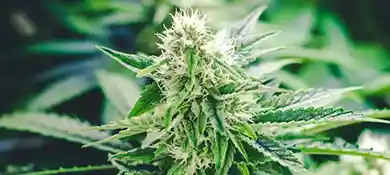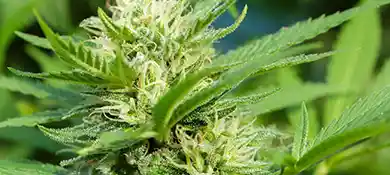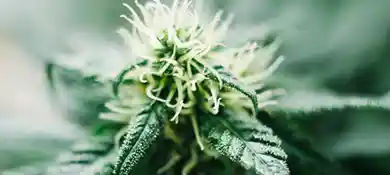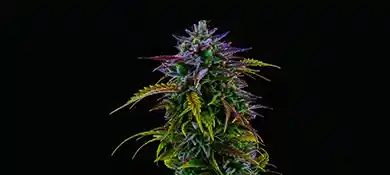Spotless Cannabis: A Closer Look at Black Spots on Weed Plants
Picture this: You're tending to your cannabis garden, thriving in the joy of cultivation, when suddenly, you spot a disheartening sight – black spots on weed. What could be the cause of this sudden blemish? More importantly, how do you tackle this issue without risking the health of your beloved plants?
This comprehensive guide steps into the often overwhelming world of cannabis cultivation with a spotlight on understanding and managing the menace of black spots on weed. It's not just about managing a problem; it's about understanding the root cause, strategizing an effective response, and ensuring the continued well-being of your plants.
We're going to walk you through the different scenarios, identifying the culprits behind these black spots and sharing practical steps to restore your plants to health. It's a journey of learning, adapting, and mastering the nuances of cannabis cultivation.
So, put on your gardening gloves, and let's dive in! It's time to turn those black spots into green lights for your gardening success.

The Phenomenon of Black Spots on Weed
Cannabis cultivation is an art form that requires keen attention and a good understanding of plant pathology. Among the multitude of things a grower needs to watch out for, one common and often unnerving discovery is black spots on weed plants.
This unexpected sight, similar to a pothole on a smooth road, disrupts the otherwise lush green texture of the plant. These black spots are more than just unsightly; they carry implications for your plant's health.
The Appearance and Potential Impact of Black Spots on Weed
In the journey of caring for your cannabis plants, attention to detail matters. That's why the appearance of black spots can be a real downer. But what do they look like, and why should you be concerned?
The Characteristics of Black Spots
Imagine the vibrant green canvas of a healthy cannabis leaf tainted by tiny, pepper-like dots. These dots, often accompanied by a pale-yellow halo, mark the early stages of black spot infestations. Though the leaves are the primary victims, these uninvited guests don't discriminate and can invade any part of the plant. If allowed to remain, these spots expand and create a burnt, withered look, robbing the leaf of its vitality.
Black spots usually start as tiny, dark dots, often surrounded by a yellowish halo. The blotches, though they might pop up anywhere on the plant, find the leaves a particularly favorite haunt. Such an insidious start of nutrient deficiencies can quickly put a damper on the thriving growth of your plant. Given enough time and left unattended, these dark invaders can grow, causing further harm to the leaf's integrity.

The Possible Harm of Black Spots
In the world of cannabis cultivation, black spots serve as glaring indicators hinting at brewing problems. They are an indication of something going awry, be it pesky pests, deadly diseases, or nutrient imbalances. If a pest infestation is the cause, these little critters can drain the life out of your plants, leaving them weak and more susceptible to further invasions.
In a different vein, nutrient shortages can stop your plant's expansion dead in its tracks, while mold infections can spread uncontrolled, posing a serious risk to the entirety of your harvest.
The Effect of Black Spots on Cannabis Plant Health and Yield
With all this in mind, underestimating the impact of black spots on weed could be a costly mistake. These blemishes act as an obstacle to photosynthesis, the essential life process where plants turn sunlight into nourishment for growth. Such disruptions can lead to serious consequences for your plant's vitality and the final harvest quantity. And if these black blemishes are just the tip of the iceberg, indicating a more extensive disease or pest issue, ignoring them could trigger a chain reaction of plant health problems.
The task at hand might seem challenging but fear not. Armed with accurate knowledge and a forward-thinking attitude, you can nip this issue early, ensuring your cannabis plants continue to flourish and prosper. In the next part, we'll delve into the potential root causes of these black blemishes and provide you with hands-on methods to combat this prevalent issue.
Decoding the Causes of Black Spots on Weed Plants
The mystery behind black spots on cannabis plants is a journey into a triad of causes: pests, diseases, and nutrient deficiencies. When these dark blemishes appear, it's the plant's distress call for help. Ignoring these signals can have devastating consequences, leading to a compromised crop and reduced yields. Recognizing and responding to these issues swiftly can often mean the difference between a successful harvest and a heartbreaking loss.
Pests: The Insects That Cause Black Spots on Cannabis Leaves
A cornucopia of insects can invade your cannabis plants, leaving behind the chaos of black spots in their wake. The infamous spider mites, for instance, are minute yet mighty enemies of cannabis plants. In a massive attack, these tiny invaders feast on the plant's nutrients, transforming vibrant green leaves into a paler version of themselves, eventually turning brown and, sadly, dying off. Sometimes, the mites' fecal matter might manifest as tiny black spots. While these spots may not directly harm the plant, they're an unpleasant visual reminder of an ongoing infestation.
Diseases: Fungal Infections That Cause Black Spots
In the battle against black spots, diseases, especially fungal infections, pose a serious threat. The fungus known as Leaf Septoria, also referred to as yellow leaf spot, is one such adversary. It usually shows its ugly face as yellow and brown spots on the lower leaves during the flowering phase before spreading its destructive influence upwards. If not caught and treated early, the aftermath can be devastating, with the affected leaves withering away and dying, often compromising the entire plant.
Nutrient Deficiencies That Lead to Black Spots
Sometimes, black spots are a plant's desperate plea for more nutrients, akin to a hunger pang. An inadequate supply of certain nutrients often leads to black or brown spots manifesting on the cannabis leaves. Let's dive deeper into this issue.
The Role of Calcium Deficiency
If you see spots forming on new leaves before slowly taking over older ones, it's a cry for calcium. A calcium deficiency typically starts as spots on a few leaves, not all over the plant, as a bug infestation would. Generally, the leaves receiving direct sunlight are the first to show these signs of stress, while the lower, more shaded leaves maintain their green glow until the problem exacerbates.

The Impact of Potassium Deficiency
Just as calcium plays its part, so does potassium, particularly during the flowering stage. Without enough potassium, black and brown spots start appearing on the leaves, potentially resulting in disappointing yields. Remedying this can be as simple as introducing a potassium-rich source like kelp meal or wood ash, assuming nutrient lockout has been ruled out.

Understanding the Implications of Phosphorous or Nitrogen Deficiency
Phosphorous and nitrogen - are two other critical players in the health and prosperity of your cannabis plants. A lack of either nutrient can spell trouble, including black spots:
● Phosphorous deficiency: It's crucial for root and flower development. A lack of this nutrient can lead to the appearance of black spots on the leaves.
● Nitrogen deficiency: Nitrogen is responsible for the production of chlorophyll. Its absence leads to yellow leaves that eventually turn brown and die due to their inability to photosynthesize. Correcting this can involve enriching the plant with nutrient-dense supplements like bat guano or worm castings.
In essence, the cause of black spots on your cannabis plants could be an invading pest, a burgeoning disease, or a cry for nutritional help. By diligently monitoring your plants and promptly addressing any signs of distress, you can maintain the health and productivity of your cannabis plants.
Preventing Black Spots on Weed: Proactive Measures and Environmental Balance
Transitioning from understanding the root causes of black spots, we now shift our focus to mitigating these challenges. A meticulous and proactive approach to pest management, nutrient regulation, and environmental control can be the defining factors in ensuring the health and productivity of your cannabis plants.
Effective Pest Management: Insects to Look Out For
The world of bugs is vast and varied, and unfortunately, some are particularly interested in your cannabis plants. These uninvited visitors can cause severe damage if not handled promptly. Therefore, learning about potential pests and their prevention strategies is a must.
- Spider mites: These tiny, almost invisible insects are a nightmare for any cannabis grower. The damage they inflict manifests as discoloration on the leaves, eventually leading to the demise of the plant if left unchecked. Regular inspection, specifically under the leaves, is a key preventive measure. If you spot these troublesome creatures, applications of neem oil and insecticidal soaps are often effective.
- Aphids: These pests drain the nutrients from your cannabis plants, causing the leaves to turn yellow and curl. Biological control methods, such as introducing ladybugs and lacewings (natural aphid predators), can be an effective and eco-friendly solution.
- Leafhoppers: Leafhoppers not only feed on your plants but also act as carriers of diseases. A clean growing area, free from weeds, can deter these pests and protect your plants.

Optimizing Nutrient Management: Addressing Deficiencies
A well-fed cannabis plant is a happy cannabis plant. To counteract deficiencies that might cause black spots, consider the following:
- Calcium: To tackle silent calcium deficiencies, add high-calcium products like bone meal or garden lime to your soil, strictly adhering to recommended guidelines.
- Potassium: Boost potassium levels by adding kelp meal or wood ash to your soil or growing medium, again following recommended proportions.
- Phosphorous and Nitrogen: Ensure a steady supply of these vital nutrients by integrating organic matter like compost or worm castings into your soil. This slow-release solution promotes prolonged plant health.
Maintaining a Balanced Environment: The Key to Healthy Cannabis Plants
Imagine walking into a room where the temperature is just right, the air fresh, and the ambiance invigorating - that's the sort of environment your cannabis plants crave. Let's explore how we can achieve this:
● Temperature and Humidity: Here's a quick guide to the ideal temperature and humidity at each stage of cannabis plant growth:
|
Growth Stage |
Ideal Temperature Range |
Ideal Humidity Range |
|---|---|---|
|
Seedling |
68-77°F |
65-70% |
|
Vegetative |
71-82°F |
40-70% |
|
Flowering |
68-79°F |
40-50% |
|
Late Flowering |
64-75°F |
35-50% |
- Airflow and Light: Ensure proper air circulation to prevent mold and fungal growth, but also ensure adequate light exposure, being cautious of too intense sunlight, which can harm leaves.
- Soil pH: A pH value between 6.0-7.0 is desirable for soil-grown cannabis. Deviating from this range can impede nutrient uptake, leading to deficiencies and the dreaded black spots.
Creating an environment that hits these key parameters consistently can be challenging, but thankfully, modern technology can lend us a hand.
Companies like Altaqua are stepping up to this challenge, offering advanced HVAC systems to control temperature and humidity effectively. These tools provide a helping hand, ensuring your cannabis plants get the environment they need to thrive, minimizing the risk of black spots, and increasing overall yield and quality. It's not just about preventing a problem; it's about creating an optimal growth space for success.
A Step-by-Step Guide: Identifying and Treating Black Spots on Weed
Now that we have a deeper understanding of the causes and preventive measures, let's dive into how you can detect, identify, and treat black spots effectively.
Step 1: Early Detection: Recognizing Signs of Black Spots
Detecting black spots in their early stages can save your cannabis plants from severe damage. Be vigilant, inspect your plants routinely, and keep an eye out for:
- Black or brownish spots on leaves
- Yellowing leaf edges
- Wilting or drooping leaves
- Distorted leaf growth
The sooner you spot these symptoms, the easier it is to control and eliminate the issue.
Step 2: Identifying the Cause: Pests, Diseases, or Nutrient Deficiencies?
Next, pinpoint the root cause. Is it pests, diseases, or nutrient deficiencies? Each cause has its unique signs. For instance, visible insects or sticky residue on the underside of leaves indicate a pest problem. Yellowing leaves often point to nutrient deficiencies. If it's hard to identify, consulting with a local horticulturist or agricultural extension service can be beneficial.
Step 3: Taking Action: Best Practices for Treating Black Spots
Having identified the cause, it's time to roll up your sleeves and get to work. The treatment will largely depend on the root cause:
- In case of pests: Consider using organic insecticides or introduce beneficial insects like ladybugs that can naturally control the pest population.
- If it's nutrient deficiencies: Rethink and adjust your feeding regimen. Pay attention to the N-P-K ratios to bring about a balanced nutrient supply.
- In case of diseases: Trim and dispose of infected areas carefully, increase airflow around your plants, and explore organic fungicides if needed.
Step 4: Monitoring the Situation: The Importance of Ongoing Care
Once you've started treatment, monitor your plants closely. Check daily for signs of improvement or deterioration. Remember, consistency in care can significantly impact the outcome.
Step 5: Prevention: Implementing Strategies to Stop Black Spots Before They Start
As the saying goes, "An ounce of prevention is worth a pound of cure." To safeguard your cannabis plants from black spots, keep the growing environment balanced, stay vigilant for any pest presence, monitor nutrient levels, and use tools for precise climate control. By being proactive, you can prevent black spots from appearing and ensure your plants grow healthy and robust.
Growing cannabis can indeed be a labor of love, particularly when you are armed with the knowledge to prevent and manage problems like black spots.
Ensuring Future Plant Health: Recovery and Prevention after Black Spot Infestation
We've ventured quite a distance in this journey from decoding the causes of black spots on weed plants, taking preventive measures, and embarking on treatments. Now, let's illuminate the path that leads us to a healthy future for your cannabis plants, a road to recovery and prevention after black spot infestation.
Implementing Long-Term Care and Monitoring Strategies
Ridding your cannabis plants of black spots is only half the battle won. The victory lies in nurturing them back to health and maintaining that state. Consistency and vigilance are your key allies in this stage:
1. Health Check: Regularly inspect your plants for any signs of stress or disease. Use a magnifying glass, if needed, to spot any tiny pests or early signs of black spots.
2. Climate Control: Remember the golden numbers we shared for temperature and humidity across different growth stages? Stick to them. Investing in reliable climate control systems, like Altaqua's HVAC solutions, can make this task a breeze.
3. Soil and Nutrient Management: Regularly test your soil to ensure it provides the right blend of nutrients for your plants. Too little or too much of a certain nutrient can distress your plants, leaving them vulnerable to black spots.
Tactics to Prevent Recurrence of Black Spots
If you've battled black spots once, you know it's an experience you don't want to repeat. Let's put a shield up with these tactics:
- Cleanliness: Keep the growing area, tools, and equipment clean. This practice limits the chances of black spots, or any other disease, for that matter, from finding a home in your cannabis garden.
- Crop Rotation: If you're growing other crops alongside cannabis, consider rotating them. Crop rotation can help break the life cycle of pests and diseases.
- Organic Pest Control: Introducing beneficial insects or using organic pesticides can help you keep the pest population in check, thereby reducing the chance of black spots caused by pests.
- Plant Spacing: Ensure your cannabis plants have ample space to grow. Adequate spacing allows for better airflow, reducing humidity, and hence the chances of fungal diseases.
Black spots can be intimidating, but with the right information and practices, they are manageable. Prioritize preventive measures, practice early detection, implement an effective treatment plan, and follow through with robust recovery and monitoring strategies. Your reward will be a thriving cannabis garden with happy, healthy plants. After all, as every seasoned gardener knows, the secret to a bountiful harvest lies in patience, persistence, and proactive care.
Conclusion: Winning the Battle Against Black Spots on Weed
In this comprehensive journey, we've dug deep into the causes, prevention, treatment, and future strategies to tackle the formidable black spots on cannabis plants. Unveiling the mystery behind these spots, we learned that pests, diseases, and nutrient deficiencies are prime culprits. Yet, with the right vigilance and know-how, early detection becomes our ally in nipping this issue in the bud.
From there, we addressed the core of managing the environment to keep these black spots at bay. Achieving balance in temperature and humidity is the mantra here, one made possible with the right HVAC solutions. Armed with this knowledge, we charted a step-by-step plan to battle these black spots, going from detection to prevention, helping you reclaim your cannabis garden.
As we rounded up our discussion, we highlighted the importance of ongoing care in the post-black spot era. Implementing long-term care strategies and developing preventive tactics, such as cleanliness, crop rotation, and organic pest control, are the shields that keep black spots from returning.
There's an inherent beauty in nurturing cannabis plants, a journey marked by patience, knowledge, and a proactive attitude. Remember, black spots are not the end; they're simply challenges you're now well-equipped to handle. Keep your eyes open, stick to your care regimen, and always prioritize your plants' needs. In the end, a healthy, thriving cannabis garden awaits your patient and diligent efforts.
FAQ
1. What causes black spots on cannabis leaves?
Black spots on cannabis leaves can be caused by several factors, including pest infestations, diseases, and nutrient deficiencies. Pests such as aphids, thrips, and spider mites can lead to black spots. Furthermore, fungal diseases like Septoria leaf spot and bacterial diseases can also cause these spots. Lastly, deficiencies in phosphorous or nitrogen can manifest as black spots on your cannabis leaves.
2. How can I prevent black spots from forming on my cannabis plants?
Preventing black spots involves implementing proactive measures and maintaining environmental balance. Effective pest management, optimizing nutrient management, and maintaining a balanced environment with ideal temperature and humidity levels are key.
3. What are the steps to identify and treat black spots on cannabis plants?
The first step is early detection and recognizing the signs of black spots. Next, identify the cause: is it pests, diseases, or nutrient deficiencies? Once you've identified the cause, you can start the appropriate treatment. It's important to monitor the situation and provide ongoing care for your plants. Finally, implement strategies to prevent black spots from appearing again in the future.
4. How can I ensure the future health of my cannabis plants after a black spot infestation?
Long-term care and monitoring strategies are crucial in ensuring the future health of your cannabis plants. Implementing cleanliness protocols, practicing crop rotation, and using organic pest control methods can prevent recurrence. It's also important to maintain optimal temperature and humidity conditions with an appropriate HVAC solution.
5. How can I identify the early signs of black spots on my cannabis plants?
Early signs of black spots on cannabis plants can include discoloration or darkening of the leaf surface. The appearance of small, black or dark brown spots can also be an early sign. It's important to check your plants regularly for these signs to ensure early detection and treatment.
Share with your friends:
Popular Blogs on Altaqua:
Download Catalogue



